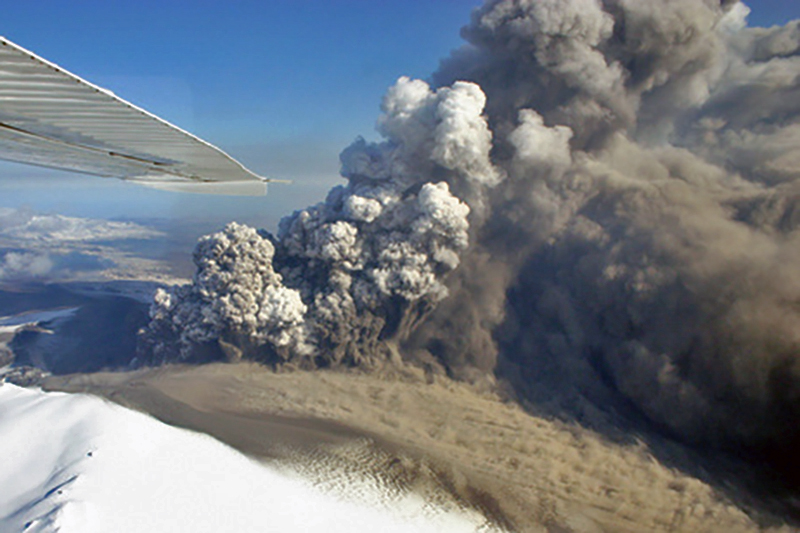Eyjafjöll eruption Iceland 2010

On March 20, 2010, a new eruptive phase of Iceland's Eyjafjallajökull volcano began, marking its first activity since 1823. The eruption was localized in an ice-free area in the first few days. However, starting on April 14, the magma intruded into the central crater, coming into contact with the glacier covering it. This contact led to magma fragmentation, resulting in the formation of an ash cloud that spread north and across central Europe.
On April 16, the cloud also reached Italy. On April 18, the Civil Protection Department convoked the Operational Committee, where a technical-scientific analysis group was established to closely examine the phenomenon.
Features of the Icelandic volcano. Eyjafjöll, also known as Eyjafjallajökull, is a nearly 1,700 m high volcano located west of Katla volcano in southern Iceland. Specifically, it is an ice-covered stratovolcano with a summit caldera 2.5 km wide.
Despite the latest eruption, it is the least active of the other volcanoes in the eastern area of Iceland. Three volcanic eruptions have occurred in the past 1100 years. The most recent eruption began in December 1821 and lasted more than a year until January 1823.
Photo: Flight on Eyjafjallajökull, April 17, 2010 / Icelandic Coast Guard